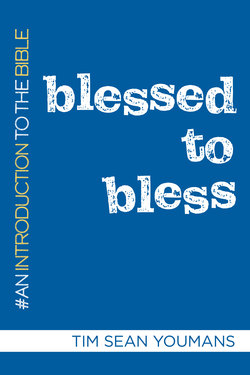Читать книгу Blessed to Bless - Tim Sean Youmans - Страница 38
На сайте Литреса книга снята с продажи.
Оглавление25
The Golden Calf and the Presence of God
Read Exodus chapters 32–34.
Moses is on Mount Sinai in the presence of God a second time; while away the people get anxious and convince Aaron, Moses’s brother, to create a golden calf to worship. When Moses returns and sees this, he does three things:
• He smashes the tablets in a fit of rage.
• He grinds up the golden calf, mixes it with water, and forces the people to drink it.
• He puts together a team of Levite assassins to hunt down the organizers of this event and kill them with the exception of Aaron. Was his hand forced under duress?
Did you find anything comical in Aaron’s explanation? “So they gave it [gold] to me, I threw it into the fire, and out came this bull calf !” (Exod. 32:24). Really? Is Aaron three-years-old?
And then God has his own response, sending a plague to kill those guilty of idolatry.
Part of this story is Moses trying to convince God not to abandon them.
Why should the Egyptians say, “He had an evil plan to take the people out and kill them in the mountains and so wipe them off the earth”? Calm down your fierce anger. Change your mind about doing terrible things to your own people. (Exod. 32:12)
This is a priestly act, advocating for the people, despite their guilt. And he makes an appeal to God’s ego and reputation: “Lord, why does your fury burn against your own people, whom you brought out of the land of Egypt with great power and amazing force?” (Exod. 32:11).
Then Moses and God point them to their long-term destination. They will return to the land of Canaan with a promise that God will drive out those tribes that are living there. They are known collectively as the “Seven Canaanite Tribes.” You might take some issue with this. What about those tribes? Doesn’t God love them? This is a tension that we will be observing in these stories for the next one thousand years, but particularly in this period, what is called the Wilderness and Conquest of Canaan. Don’t forget the first time we encountered the name Canaan. It was Noah’s grandson who was banished for something shady that happened between Noah and Canaan. So there seems to be a history between the descendants of Noah and those of Canaan. More on that in a later chapter.
Moses creates a meeting place where he talks with God and calls it the Tent of Meeting. A pillar of cloud hovers near the entrance when God is there during the day, and at night it was a pillar of fire (Exod. 13). A firenado?
Tribal Identity
One of the larger themes in the Hebrew and Christian Scriptures to start tracking is tribal identity. The scriptures are a religious history of the Hebrew people. Earlier, in our reading in Genesis, we looked at the origin stories: Creation, Garden of Eden, the Flood. In some respects those earlier stories can be considered universal, or accounts that concern all of human civilization. It may be splitting hairs because those stories are within the Hebrew tradition, but even so, they are universal stories.
But when God calls Abraham and Sarah to begin a family-tribenation, the stories become more culturally specific. At this point, we are fully located in the history of one particular tribe among many, that of the descendants of Abraham, Isaac, and Jacob. (In the Episcopal Church we include the women, saying Abraham and Sarah; Isaac and Rebecca; Jacob, Rachel, and Leah. I often take it a step further and include the slave women of Jacob—Bilhah and Zilpah, since they had the children of what became tribal heads.)
The theme of tribal identity is important to revisit because Moses will be introducing laws, rituals, and cultural traditions that will shape that specific tribe. It is in part why the passage you read forbids them to intermarry with other tribes. It takes it to an even more extreme place, “You must tear down their altars, smash their sacred stone pillars, and cut down their sacred poles” (Exod. 34:13). God so vehemently wants to build a culture that is specific to one brand of monotheism that he takes a hardline against mixing cultures, even to the point of intolerance.
There is a dark side to this. As modern readers we ask, “Why can’t these tribes learn to coexist?” Religious and cultural tolerance is such an important part of the American experience. We are a tapestry of a variety of faiths and cultures that all enjoy freedom of expression and religion. Why can’t that be the message of fifteenth-century BCE Israel? God is trying to help them build a culture that will bless all the families of the earth. And so for a time they need to concentrate on the development of that blessing culture. Do you see the historical irony? In order to be a “blessing culture,” there will be times that cultures are pitted against each other.
Try on this analogy: most parents want their children to be kind and decent to everybody, but it is safe to say that parents do not want their children to be friends with everyone, especially with those with high risk behaviors. For simplicity’s sake, let’s say the lion’s share of the Canaanite tribes were to be avoided for the same reason. If you read these stories closely, you see that there are exceptions to this rule. Both attitudes coexist. We will revisit this topic throughout our reading of the Bible.
